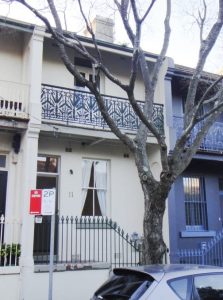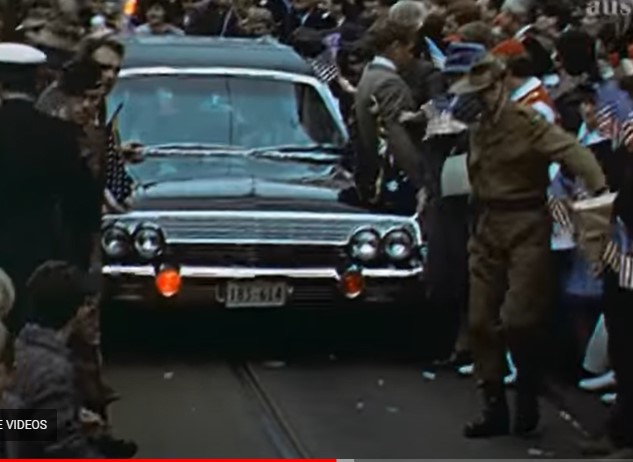By Ian Stephenson, Bulletin 7/2023, September

The seventeenth site nominated in 2021 for a Blue Plaque is 11 Lyndhurst Street Glebe. Robin Askin who was Premier of NSW from 1965 to 1975 moved here in 1920 when he was 13 years old and left in 1931 when he was 24. (He changed his first name to Robert in 1971). Before this he had lived at 29 Talfourd Street. His family were poor. In 1917 they were evicted and lived in Wentworth Park for a short period.
Askin was the Premier of NSW from 1965 to 1975. His government oversaw the rapid development of inner-city Sydney and the central business district. This was facilitated by sacking Sydney City Council in 1967 and replacing it with a three-member commission. Many of Sydney’s most important historic buildings including the Theatre Royal and Hotel Australia were demolished during his premiership.
The historic areas of Woolloomooloo and The Rocks were to be completely razed and replaced by high rise. A large sports complex was to be built on Moore and Centennial Parks and adjoining historic houses demolished.
The expressway known as the Western Distributor was built through Ultimo and intended to continue through Glebe, Annandale and other historic suburbs.
Widespread concern about the destruction of cultural and natural heritage and the associated decline in Sydney’s livability produced unusual alliances. A notable example was the middle-class women of Hunters Hill working with the communist led Builders Labourers Federation (BLF) to save Kelly’s Bush.

Less than 50 metres from Askin’s former home in Lyndhurst Street the NSW Department of Main Roads acquired 88 houses to make way for the Western Distributor, including the 1834 colonial mansion Lyndhurst.
Lyndhurst became a focus for conservationists of all political hues. In 1972 the BLF placed a green ban on it. Lyndhurst, and much, but not all, of the neighbourhood was saved from demolition.
Despite becoming leader of the Liberal Party, moving across the harbour to Manly and changing his first name and accepting a title, Askin remained proud of his working-class origins. It is said he was happiest at the rugby league, a boxing match, the races and the dog track.
His government’s record as destroyers of Sydney’s cultural heritage and the proximity of his former Glebe home to Lyndhurst and the path of the Western Distributor, which were turning points in Sydney’s urban conservation movement, imbue his association with 11 Lyndhurst Street with rich meaning.

See more about Robin Askin/ Sir Robert Askin and his connection to Glebe.








There are no comments yet. Please leave yours.